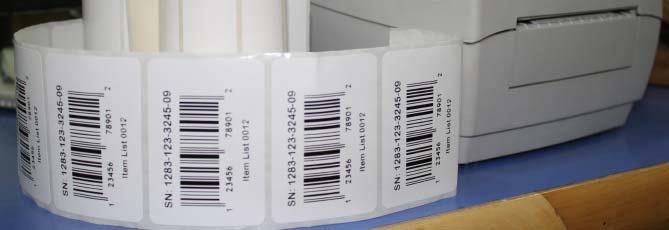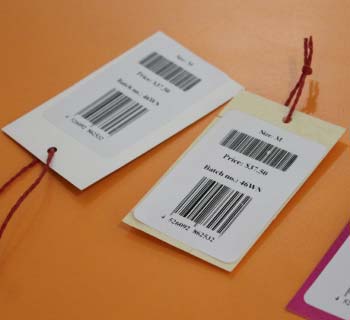Types of Barcode used in Distribution
-
►
UPC (Universal Product Code):
UPC is a standard
barcode symbology that is used to identify consumer products in
retail settings. It consists of a series of 12 digits that encode
a product's manufacturer, product, and check digit information.
UPC barcodes are commonly found on food, household items, and
other consumer products.
-
►
EAN (European Article Numbering):
EAN is a
barcode symbology that is similar to UPC, but is used primarily in
Europe and other countries outside of North America. It consists
of a series of 13 digits that encode a product's manufacturer,
product, and check digit information.
-
►
GS1-128 Bracode symbology:
GS1-128is a high-density barcode
symbology that is used to encode a variety of data, including
product information, shipping information, and other supply chain
data. It is often used in logistics and distribution operations to
track products and shipments as they move through the supply
chain.
-
►
ITF (Interleaved 2 of 5):
ITF is a numeric-only
barcode symbology that is used to encode a product's shipping
container information, including weight, destination, and other
details. It is commonly used in logistics and distribution
operations to label packages and shipping containers.
Distribution barcodes are a type of barcode that is used to identify and
track products and
packages as
they
move through the distribution process, from manufacturer to end user. These barcodes are
typically printed
on
labels or directly on the product or package itself.
Distribution barcodes can be used on a wide range of products and packages,
including:
🞛 Consumer
goods: such as
electronics,
appliances, clothing, and food items.
🞛 Medical
supplies: such as
pharmaceuticals, medical devices, and equipment.
🞛 Industrial
goods: such as
machinery,
tools, and parts.
🞛 Retail
products: such as
books, music,
and other media.
🞛 Shipping and
packaging
materials: such
as boxes, bags, and envelopes.
The use of distribution barcodes allows for efficient and accurate tracking of products and
packages
throughout
the distribution process, which can help to reduce errors, improve inventory management, and
increase overall
productivity.
Download DRPU Distribution Barcodes Software
DOWNLOAD
Comparison to other Barcodes:
Compared to other barcode systems, distribution barcode
symbologies are often designed to be easily read by barcode
scanners in high-volume, fast-paced environments. They may also be
optimized for readability on a variety of surfaces, including
curved and uneven surfaces, and may include additional
error-checking mechanisms to ensure accurate scanning.
Additionally, distribution barcode symbologies may include
specific data structures and formats that are tailored to the
needs of the distribution industry, such as the inclusion of
shipping and logistics information.

